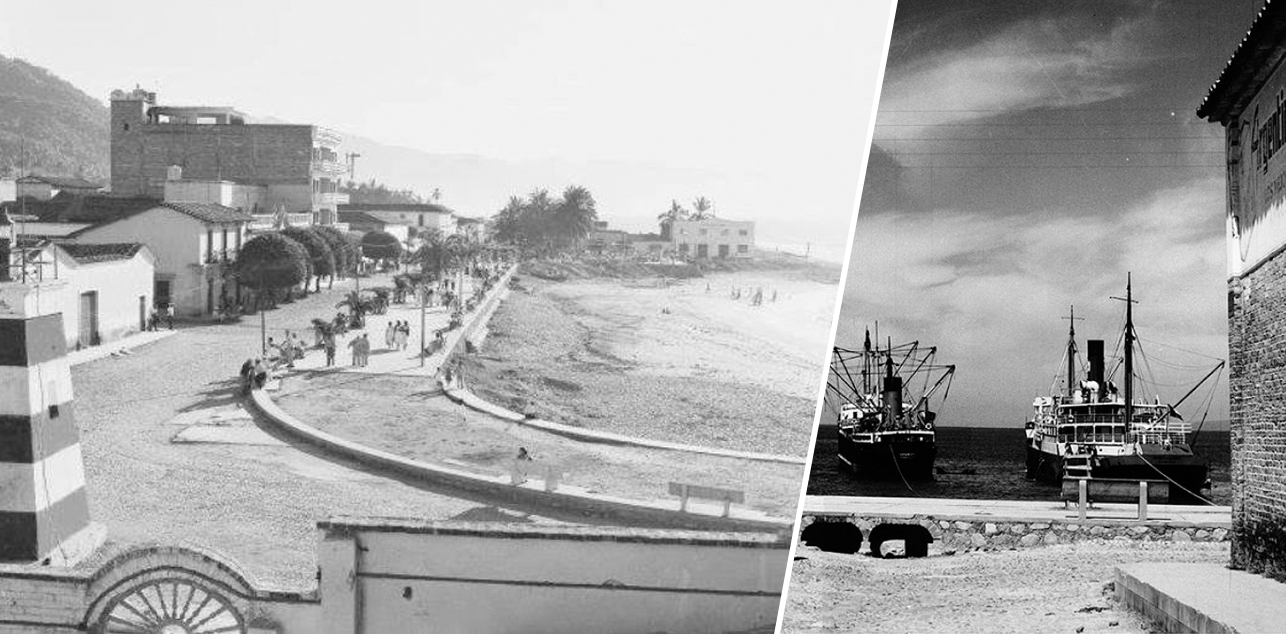
You come to Puerto Vallarta and Nuevo Vallarta every year, you go through Banderas Bay, but… Do you know where their names came from?
To explain the origin of the names that identify this region, we will go back to the Spanish conquest. Captain Francisco Cortés de San Buenaventura was the conqueror of these lands. Legend says that in March 1525, when he arrived in the town of Tintoque (near what is now known as Bucerias), more than twenty thousand armed native people were waiting for him, carrying a feather flag in their hand and another in their quiver of arrows.

The Spanish brought a red damask flag with an image of the Virgin Mary on the front and a Christian cross on the back. Seeing so many enemies, a friar who accompanied them knelt to ask for divine help and at that moment, the flag was filled with splendor which instilled fear in the native people who surrendered, leaving their little flags and their arms at the priest’s feet. Because of this, the Spanish named the place Valle de Banderas (flags in Spanish) and the bay would later inherit the same name.
A step to History…
What we know today as Puerto Vallarta remained isolated from the rest of the world between the mountains, the ocean and the Ameca River for many years. Its beaches were only used by mining companies from the mountains to load and unload supplies. The economic activity of the region was concentrated in the towns of Cuale, San Sebastián del Oeste and Mascota, all silver mining towns.

At that time, the place was known as “Las Peñas de Santa María de Guadalupe”, named after Don Guadalupe Sánchez Torres, a salt merchant who visited the area regularly, since the mines required large amounts of salt to refine the silver. Over time, people referred to the site only as Las Peñas. He probably decided to call it like that because of the big rocks that are in the sea and on its shore, especially to the south of the bay.
The First Settlements
With the arrival of Don Guadalupe Sánchez Torres’ family on December 12, 1851 and other families to settle permanently in the area, the port began to populate and its economy grew. Some families devoted themselves to agriculture, others to livestock and others to trade. By 1880 it already had 1500 inhabitants.

In 1885, the port was officially opened to national navigation. That same year, a Maritime Customs office was established and the town was declared a political and judicial site officially recognized as Las Peñas. But it was not until May 31, 1918, that Las Peñas obtained the title of municipality and with it a new name: Puerto Vallarta, in honor of the governor of Jalisco: Ignacio Luis Vallarta, one of the most learned jurists of the nation.
At the time of the government of President Benito Juárez, who had to govern Mexico from a stagecoach because his detractors were persecuting him, Ignacio L. Vallarta became one of the best advisers to maintain the legitimacy and legality of this government at all times. Once the military phase of the Reform (historic period in the which government ended the Catholic Church’s intervention in its affairs) and the French invasion –which occurred from 1862 to 1867– ended, Vallarta was recognized as the most skilled in jurisprudence in the country.

The most outstanding positions in which he served were the governorship of Jalisco in 1871, the Ministry of the Interior during the Juarez period, the Foreign Relations office during the Porfirio Diaz administration, and president of the Supreme Court of Justice of the Nation until 1882, after which he retired to private life.
THE TOURIST BOOM!
After the tourist boom of Puerto Vallarta shot up in 1964 with the movie “The Night of the Iguana”, directed by legendary John Huston and starring successful actors Richard Burton and Ava Gardner, the urbanized area began to spread rapidly.

From that year on, and with the support of the governor of Jalisco Francisco Medina Ascencio, Puerto Vallarta would become little by little the world-class tourist destination that it is today. Governor Medina Ascencio pleaded with federal authorities to provide Puerto Vallarta with adequate infrastructure to serve visitors who arrived at the port in greater and greater numbers.
Under Medina Ascencio, important works were carried out, such as the Puerto Vallarta International Airport and the coastal road Barra de Navidad – Vallarta. Now you know to whom we owe the name of the city’s main artery, Francisco Medina Ascencio Boulevard.
The Pioneer Hoteliers

Years later, when the touristic development of the region reached the beaches of the south of Nayarit, a group of businessmen, among them the founder of Marival, the Canadian senator Pietro Rizzuto, promoted the foundation of a tourist destination of great capital investments. Thus, in the early eighties, construction began for a residential development in the extensive area north of the Ameca River. Taking advantage of the great popularity achieved by Puerto Vallarta and its proximity, it was decided it would be called Nuevo Vallarta.
Today, Nuevo Vallarta is a wide community with very high added value, home to large hotels and tourist developments, including Marival® Resort & Suites, Marival® Residences Luxury Resort, and Mozzamare Casual Beach Gourmet.



